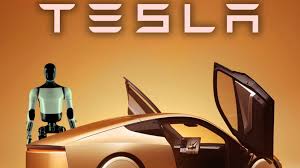
Tesla is gearing up to introduce its inaugural robotaxi service in Austin, Texas, by leveraging a sophisticated teleoperation framework that balances autonomous driving with human oversight. While the company has repeatedly touted the safety and efficiency gains of its Full Self-Driving (FSD) system, it is also building in remote-control redundancies designed to intervene when the AI encounters uncertainty. Yet this blend of autonomy and teleoperation brings its own set of technical, safety and regulatory challenges that could shape the future of Tesla’s driverless ride‑hailing ambitions.
Teleoperation Architecture and Remote Control Framework
At the core of Tesla’s approach lies a two‑tiered control system. Under normal conditions, each Model Y robotaxi relies on the onboard FSD computer—powered by Tesla’s custom neural‑network accelerators—to perceive its environment, make lane‑level navigation decisions and execute driving maneuvers. High‑resolution cameras, ultrasonic sensors and radar feed data into AI models that have been trained on billions of real‑world miles. When the vehicle encounters a scenario outside its confidence threshold—such as a construction zone, erratic pedestrian movement or ambiguous traffic signals—it signals the teleoperation network for human assistance.
Tesla has advertised for “teleoperation specialists” tasked with providing remote aid and, if necessary, taking direct control of robotaxis through secure, low‑latency links. These specialists will operate from regional control centers, monitoring live high‑definition video streams and HD mapping overlays. Using a custom telepresence console—essentially a virtual cockpit—they can issue steering, braking and speed‑adjustment commands that are transmitted back to the vehicle via 5G and edge‑computing nodes. This architecture aims to minimize latencies to under 100 milliseconds, a threshold Tesla engineers deem sufficient for safe remote maneuvering at urban driving speeds.
In parallel, Tesla is deploying redundant communication channels. Primary teleoperation routes run over mmWave 5G networks provided by local carriers, with secondary fallback via LTE and dedicated private‑5G slices managed in collaboration with municipal partners. Onboard software continuously measures signal strength and dynamically switches between networks to ensure uninterrupted control links. For critical situations—like a complete cellular outage—the robotaxi will default to a “safe‑stop” protocol, gradually decelerating to a stationary state and activating hazard lights while awaiting human assistance or manual recovery crews.
Technical and Safety Constraints
Despite these innovations, teleoperation faces fundamental limitations that could constrain Tesla’s rollout pace and coverage area. Network latency and packet loss remain the principal hurdles. In areas with weak or congested cellular coverage, even millisecond‑scale jitter can translate into tenths‑of‑a‑second delays on the road, complicating precise steering adjustments in tight urban environments. Tesla’s reliance on 5G connectivity means its initial service zones will be limited to well‑mapped, high‑density cellular corridors in central Austin—roughly corresponding to neighborhoods where carrier mmWave nodes and small cells are already prevalent.
Bandwidth demands are another concern. Each robotaxi streams multiple video feeds—forward‑facing, side‑view and panoramic cabin cameras—plus LiDAR‑style occupancy grids and diagnostic telemetry. Conservatively, this amounts to 20–30 Mbps per vehicle under typical usage. Scaling to hundreds of units could strain local networks unless Tesla negotiates dedicated spectrum or builds its own private infrastructure. To mitigate this, the company plans to implement edge inference: low‑resolution compressed video on the primary link, with high‑resolution frames fetched on demand when operators take active control.
Human factors also impose limits. Research in high‑intensity monitoring tasks suggests that one operator can safely supervise and intervene in no more than five to ten vehicles concurrently. Tesla’s internal studies reportedly align with this, prompting the firm to staff control centers with dozens of trained teleoperators at launch. Over time, they may employ “assistive AI” tools—such as automated alert triage that flags only truly ambiguous events—to reduce cognitive load. However, until such aids prove reliable, Tesla must maintain conservative vehicle‑to‑operator ratios, which in turn caps fleet size in the earliest service tiers.
Scalability, Regulation and Public Trust
Beyond tech constraints, Tesla’s remote‑control model must navigate a complex regulatory landscape. Texas’s new autonomous‑vehicle law, set to take effect in September, mandates that any driverless service maintain a fallback human operator reachable within a prescribed response time—an explicit nod to teleoperation. Local agencies will require Tesla to demonstrate end‑to‑end encryption of control links, real‑time logging of operator interventions and detailed incident‑response protocols. Any lapses—such as a dropped connection leading to an unsafe stop on a busy boulevard—could trigger fines or service suspensions.
Public perception will also play a decisive role. In the weeks leading up to launch, Tesla has engaged with community groups and local officials, showcasing safety simulations and staging ride‑alongs with city planners. The aim is to build trust by highlighting how teleoperation acts as a safety net rather than a loophole around full autonomy. Early rider feedback, gathered through a pilot “Founders Series” subscription, will inform where and when human override is deemed most critical—informing future software updates that adjust the vehicle’s “intervention threshold.”
Moreover, Tesla’s approach contrasts with competitors like Waymo and Cruise, which rely heavily on geofenced zones and manual vehicle retrieval teams rather than live teleoperation. By emphasizing remote control, Tesla bets that human supervisors can extend operational areas beyond tightly confined test districts, ultimately enabling city‑wide coverage without stationing recovery vehicles everywhere. Yet this hinges on proving consistent teleoperation reliability across varied traffic conditions—an ambitious challenge that will unfold in the coming months.
Tesla’s broader ambition extends to monetization: as the fleet grows, each successful teleoperation correction contributes to a machine‑learning feedback loop. Data from human‑handled episodes will feed into FSD neural nets, reducing future reliance on operators. Over time, Tesla expects to taper teleoperation usage, shifting to a monitoring role that flags anomalies rather than directly driving the cars. In the long run, the vision is a near‑zero human‑in‑the‑loop system, with remote operators assuming a supervisory capacity akin to air‑traffic controllers.
As Tesla prepares to press “go” on its limited Austin rollout, the coming weeks will test the feasibility of combining cutting‑edge AI with human oversight on live public roads. The company’s ability to manage latency, bandwidth, operator workload and regulatory compliance will determine whether teleoperation remains a transitional safety feature or evolves into a scalable control paradigm. For now, Tesla’s experiment in remote robotaxi control stands as a bold gambit at the intersection of autonomy, connectivity and human expertise—one that could reshape urban mobility if it passes the high‑stakes test of real‑world deployment.
(Source:www.psmag.com)
Teleoperation Architecture and Remote Control Framework
At the core of Tesla’s approach lies a two‑tiered control system. Under normal conditions, each Model Y robotaxi relies on the onboard FSD computer—powered by Tesla’s custom neural‑network accelerators—to perceive its environment, make lane‑level navigation decisions and execute driving maneuvers. High‑resolution cameras, ultrasonic sensors and radar feed data into AI models that have been trained on billions of real‑world miles. When the vehicle encounters a scenario outside its confidence threshold—such as a construction zone, erratic pedestrian movement or ambiguous traffic signals—it signals the teleoperation network for human assistance.
Tesla has advertised for “teleoperation specialists” tasked with providing remote aid and, if necessary, taking direct control of robotaxis through secure, low‑latency links. These specialists will operate from regional control centers, monitoring live high‑definition video streams and HD mapping overlays. Using a custom telepresence console—essentially a virtual cockpit—they can issue steering, braking and speed‑adjustment commands that are transmitted back to the vehicle via 5G and edge‑computing nodes. This architecture aims to minimize latencies to under 100 milliseconds, a threshold Tesla engineers deem sufficient for safe remote maneuvering at urban driving speeds.
In parallel, Tesla is deploying redundant communication channels. Primary teleoperation routes run over mmWave 5G networks provided by local carriers, with secondary fallback via LTE and dedicated private‑5G slices managed in collaboration with municipal partners. Onboard software continuously measures signal strength and dynamically switches between networks to ensure uninterrupted control links. For critical situations—like a complete cellular outage—the robotaxi will default to a “safe‑stop” protocol, gradually decelerating to a stationary state and activating hazard lights while awaiting human assistance or manual recovery crews.
Technical and Safety Constraints
Despite these innovations, teleoperation faces fundamental limitations that could constrain Tesla’s rollout pace and coverage area. Network latency and packet loss remain the principal hurdles. In areas with weak or congested cellular coverage, even millisecond‑scale jitter can translate into tenths‑of‑a‑second delays on the road, complicating precise steering adjustments in tight urban environments. Tesla’s reliance on 5G connectivity means its initial service zones will be limited to well‑mapped, high‑density cellular corridors in central Austin—roughly corresponding to neighborhoods where carrier mmWave nodes and small cells are already prevalent.
Bandwidth demands are another concern. Each robotaxi streams multiple video feeds—forward‑facing, side‑view and panoramic cabin cameras—plus LiDAR‑style occupancy grids and diagnostic telemetry. Conservatively, this amounts to 20–30 Mbps per vehicle under typical usage. Scaling to hundreds of units could strain local networks unless Tesla negotiates dedicated spectrum or builds its own private infrastructure. To mitigate this, the company plans to implement edge inference: low‑resolution compressed video on the primary link, with high‑resolution frames fetched on demand when operators take active control.
Human factors also impose limits. Research in high‑intensity monitoring tasks suggests that one operator can safely supervise and intervene in no more than five to ten vehicles concurrently. Tesla’s internal studies reportedly align with this, prompting the firm to staff control centers with dozens of trained teleoperators at launch. Over time, they may employ “assistive AI” tools—such as automated alert triage that flags only truly ambiguous events—to reduce cognitive load. However, until such aids prove reliable, Tesla must maintain conservative vehicle‑to‑operator ratios, which in turn caps fleet size in the earliest service tiers.
Scalability, Regulation and Public Trust
Beyond tech constraints, Tesla’s remote‑control model must navigate a complex regulatory landscape. Texas’s new autonomous‑vehicle law, set to take effect in September, mandates that any driverless service maintain a fallback human operator reachable within a prescribed response time—an explicit nod to teleoperation. Local agencies will require Tesla to demonstrate end‑to‑end encryption of control links, real‑time logging of operator interventions and detailed incident‑response protocols. Any lapses—such as a dropped connection leading to an unsafe stop on a busy boulevard—could trigger fines or service suspensions.
Public perception will also play a decisive role. In the weeks leading up to launch, Tesla has engaged with community groups and local officials, showcasing safety simulations and staging ride‑alongs with city planners. The aim is to build trust by highlighting how teleoperation acts as a safety net rather than a loophole around full autonomy. Early rider feedback, gathered through a pilot “Founders Series” subscription, will inform where and when human override is deemed most critical—informing future software updates that adjust the vehicle’s “intervention threshold.”
Moreover, Tesla’s approach contrasts with competitors like Waymo and Cruise, which rely heavily on geofenced zones and manual vehicle retrieval teams rather than live teleoperation. By emphasizing remote control, Tesla bets that human supervisors can extend operational areas beyond tightly confined test districts, ultimately enabling city‑wide coverage without stationing recovery vehicles everywhere. Yet this hinges on proving consistent teleoperation reliability across varied traffic conditions—an ambitious challenge that will unfold in the coming months.
Tesla’s broader ambition extends to monetization: as the fleet grows, each successful teleoperation correction contributes to a machine‑learning feedback loop. Data from human‑handled episodes will feed into FSD neural nets, reducing future reliance on operators. Over time, Tesla expects to taper teleoperation usage, shifting to a monitoring role that flags anomalies rather than directly driving the cars. In the long run, the vision is a near‑zero human‑in‑the‑loop system, with remote operators assuming a supervisory capacity akin to air‑traffic controllers.
As Tesla prepares to press “go” on its limited Austin rollout, the coming weeks will test the feasibility of combining cutting‑edge AI with human oversight on live public roads. The company’s ability to manage latency, bandwidth, operator workload and regulatory compliance will determine whether teleoperation remains a transitional safety feature or evolves into a scalable control paradigm. For now, Tesla’s experiment in remote robotaxi control stands as a bold gambit at the intersection of autonomy, connectivity and human expertise—one that could reshape urban mobility if it passes the high‑stakes test of real‑world deployment.
(Source:www.psmag.com)














